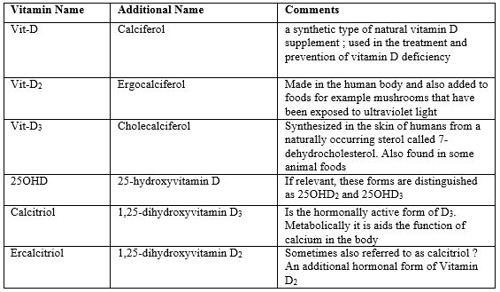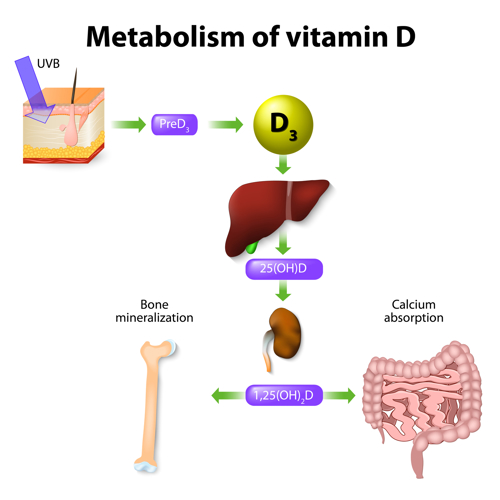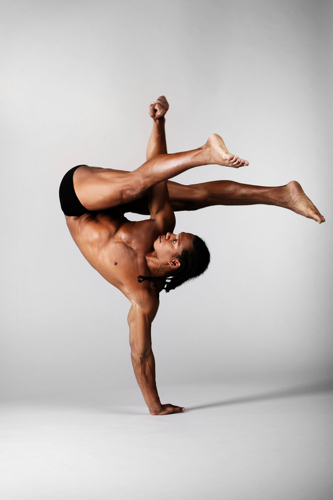The Importance of Vitamin D for Dancers
Author: Derrick D. Brown on behalf of the IADMS Dance Educators’ Committee
Vitamin D has received a great deal of attention in the last 5 years both in popular media and in dance medicine and science research, and with good reason. While much emphasis is placed on its role in bone health, a key question revealed from the research is whether it also can provide other benefits for pre- and professional dancers. The purpose of the post is to highlight some of the research done on dancers and discuss why it might be important to keep an eye on your Vitamin D levels.
We could say, that ‘if vitamins had a prima ballerina assoluta, Vitamin D (Vit-D) would almost certainly receive that rare and prestigious honour. Such a unique status usually reveals a high level of complexity, which fully describes this vitamin, as D appears to be one of the few organic substances that the human body processes both via our food and from the sun. Two major forms you might have heard of, are vitamin D2 and vitamin D3. Both D2 and D3 are found in dietary supplements and fortified foods. While there are differences, they do not greatly influence metabolism or activation in the body. You might have seen many confusing letters/ numbers combinations that describe Vit-D. The table below offers an overview of the many ways in which Vit-D is characterized in popular and health-based media.

Vit-D exerts considerable influence on the metabolism of micronutrients calcium and phosphorus, as well as key bodily organs: intestine, bone, and kidney. The image below provides a schematic of Vit-D metabolism as it occurs naturally due to sun exposure. Oral forms of Vit-D follow similar metabolic pathways through organs.

Fig.1 Metabolism processes of Vitamin D
© Designua | Dreamstime.com
As mentioned above, thanks to the photochemical processes from ultraviolet B (UVB) light, our bodies can produce significant levels of Vit-D from the sun. As with most rules there is an exception. The amount of D3 that your body can convert from UVB depends on your skin pigment. So naturally dark-skinned individuals may block UV light and prevent D3 synthesis. Geography also plays a role; more Northern countries, including, Scandinavia, the Netherlands, the UK and Germany, receive less sunlight than, say, Mexico. Sunscreen, once considered a ‘must’ is now cautioned for some; and should be used after sufficient time in the sun to allow for Vit-D synthesis, but not at the risk of sunburn (see practical recommendations below).

© Hanna Monika Cybulko, Dreamstime.com
Vitamin D and Dancing
Wolman et al (2013) studied a group of 19 UK based elite classical ballet dancers over a six month period for vitamin D levels. During the winter, all 19 dancers were either insufficient or deficient, and even in the summer months only three dancers had normal levels of the vitamin. Similarly, Dulcher and colleagues (2011) found similar results and whilst such small cohorts are not generalisable, they do provide a glimpse of the challenges that young dancers may face. Notable in both studies are the similar findings made across genders and, importantly, in different geographic locations. A possible reason for Vitamin D deficiency in young dancers, is that while studying at pre-professional academies most dancers spend considerable time in the dance studio, upwards of 5-6 hours a day, and so receive little exposure to sunlight, particularly in the northern latitudes during winter months.
Vitamin D and diet
Even with the complexity of skin type, geography and adequate healthy exposure to the sun (see practical recommendations below), we can also receive some of our D from the diet. Those who opt for an omnivore diet that is well balanced should have no trouble with additional Vitamin D sources from some dairy products, fatty fish and egg yolks, as well as fortified foods. However, vegans and vegetarians might need to work a bit harder to find significant dietary Vit-D. Larsson and Johansson, (2002) in a comparative study which assessed the dietary intake and nutritional status of young Swedish vegans and omnivores. All youths had dietary intakes lower than average of Vit-D with female vegans particular low even with Vit-D production via skin exposed to ultraviolet B (UVB) light. Similar results have been seen in Danish (Kristensen, 2015) and Finnish vegans. Together with the aforementioned studies on vegetarians and vegans from Nordic countries, it is reasonable to presume that some vegan dancers may also have low levels of this nutrient. Vegetarians and vegans can find many products fortified with Vit-D. Many alternatives to milk (oat, almond, rice) are now fortified with Vit-D. Even certain mushrooms (Portabella and Cremini) are exposed to large doses of UVB during growth increasing Vit-D levels dramatically, although due to the complex process mentioned above don’t expect to receive adequate amounts of usable (bioavailable) D by eating multiple servings of mushroom ragout!
Supplementing Vitamin D
Given much that was mentioned, one might conclude that the easy route would simply be to take a supplement. But before you run out, buy up and start popping Vit-D, it is important to caution that for athletes (dancers being a type of athlete) there may be complications. Multiple studies suggest that taking more than 5,000 IU (125mcg)/day could actually negatively impact your performance. And then quality of supplements is equally important so that no undue toxins from inferior supplements are ingested. If extremely low levels are suspected, seek the advice of a suitable medical professional/ clinical dietician who can assess serum (blood) Vitamin D levels and discuss if supplementation is right for your individual needs. A more comprehensive overview of the process and interactions can be found in the newly published book Dancer Wellness or via the nutrition resource paper, both under the auspices of IADMS.

Derrick D. Brown is Programme Manager and Lecturer at Bern University Masters of Advance Studies in Dance Science, Bern Switzerland. Associate researcher/ lecturer at the ArtEZ Institute of the Arts , Arnhem, The Netherlands. He is also a Doctoral candidate in neurocognition and motor control at Donders Institute for Brain Cognition and Behaviour; Radboud University, Nijmegen, the Netherlands.
Further Resources
Brown DD, Challis J. Optimal Nutrition for Dancers. In: Wilmerding V, Krasnow D, eds. Dancer Wellness. 1st ed.; 2017:163-191.
Challis J, Stevens A, Wilson MA. IADMS Nutrition Resource Paper 2016. 2016:1-36.
Ducher G, Kukuljan S, Hill B, et al. Vitamin D status and musculoskeletal health in adolescent male ballet dancers a pilot study. J Dance Med Sci. 2011;15(3):99-107.
Kristensen NB, Madsen ML, Hansen TH, et al. Intake of macro- and micronutrients in Danish vegans. Nutrition Journal. 2015;14(1):1-10.
Larsson CL, Johansson GK. Dietary intake and nutritional status of young vegans and omnivores in Sweden. Am J Clin Nutr. 2002;76(1):100-106.
Wolman R, Wyon MA, Koutedakis Y, Nevill AM, Eastell R, Allen N. Vitamin D status in professional ballet dancers: winter vs. summer. J Sci Med Sport. 2013;16(5):388-391.